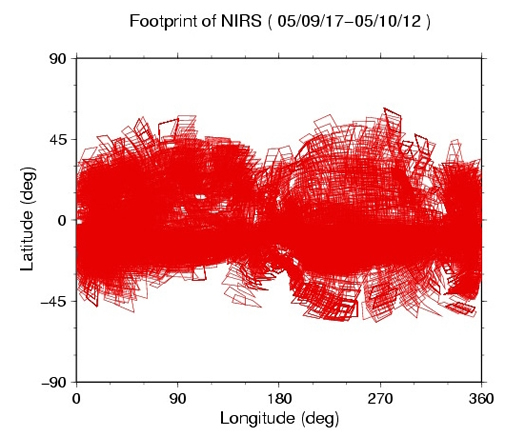TOP > Topics > 2005 > The Current Status of the Near-Infrared Spectrometer (NIRS)
![]()
The Current Status of the Near-Infrared Spectrometer (NIRS)
The Hayabusa Near-Infrared Spectrometer (NIRS) is an instrument that obtains spectra of the sunlight reflected off the surface of asteroid Itokawa. The spectrograph decomposes the reflected sunlight into counts for individual wavelengths across a known spectral region. A spectrum shows the intensity of the light at each wavelength, and the change in intensity shows the color of the material on the surface of the asteroid. By investigating the asteroid's colors at near-infrared wavelengths, we can understand the mineralogy of the surface.
This figure shows the region of Hayabusa where NIRS observed between Sep. 16 and Oct. 12. Since NIRS observes a restricted, small area (the field of view is 0.1 x 0.1 degrees) during one observation, the investigation of the whole asteroid takes much time.
Until now, NIRS' observations have concentrated around the equatorial region of Itokawa. Observations of high latitude areas will be attempted when the spacecraft moves to a position where it will become easy to observe the North Pole and South Pole of Itokawa.
|
October 17, 2005






